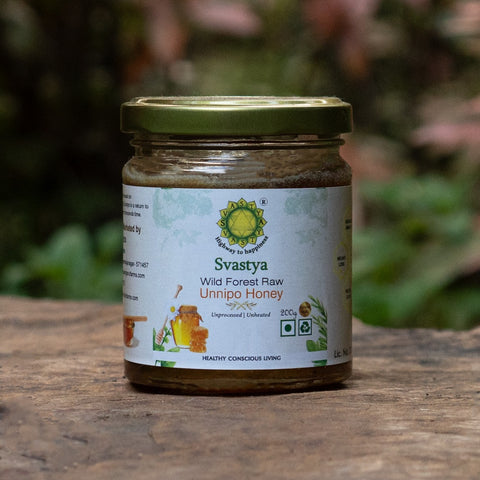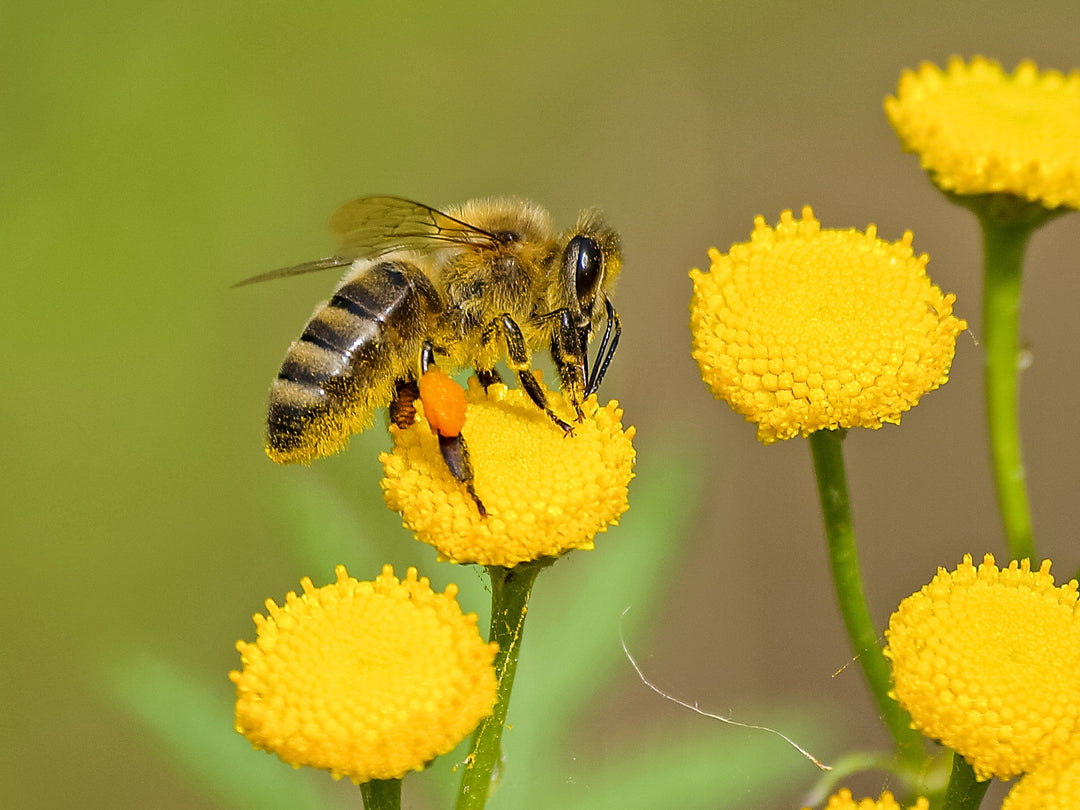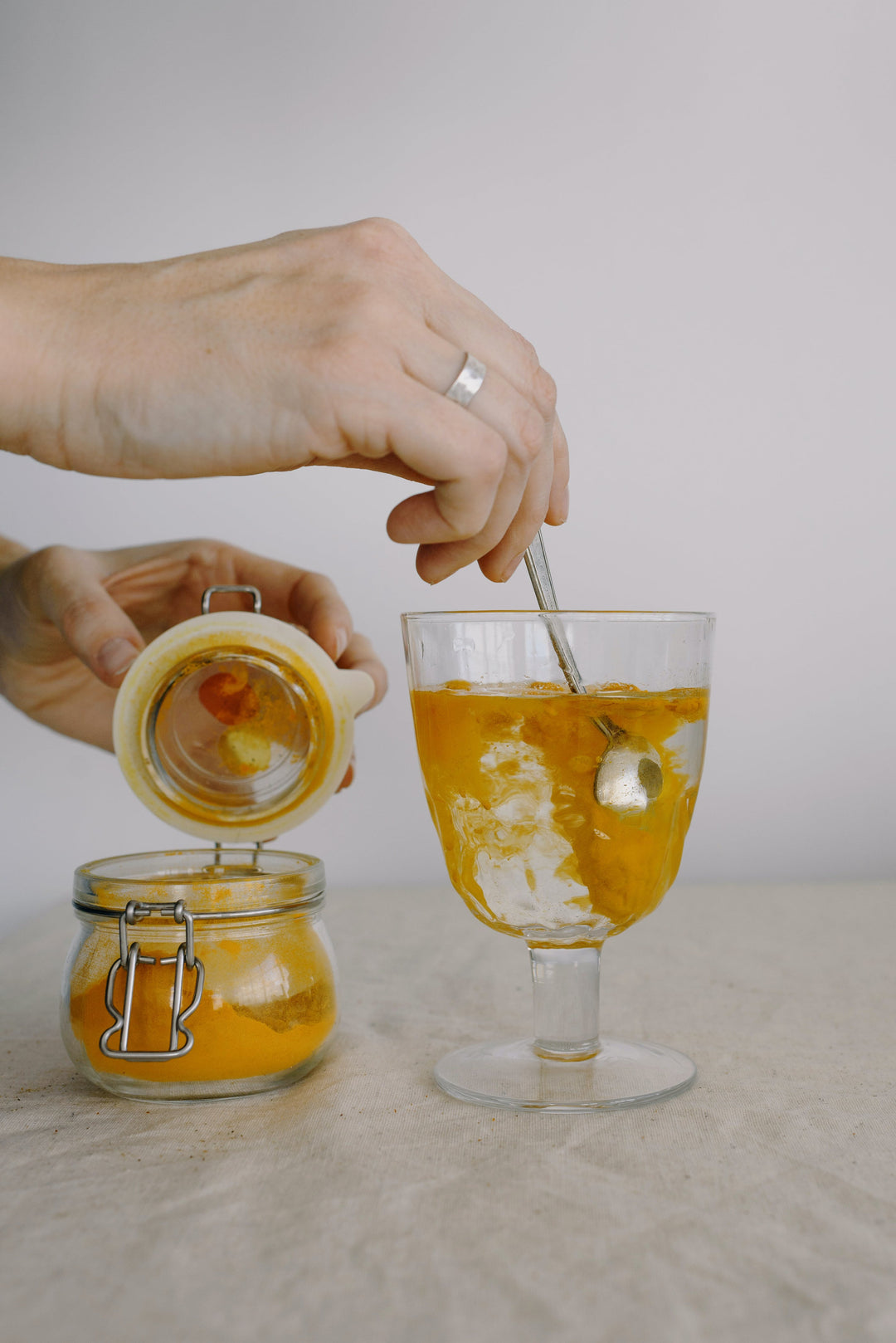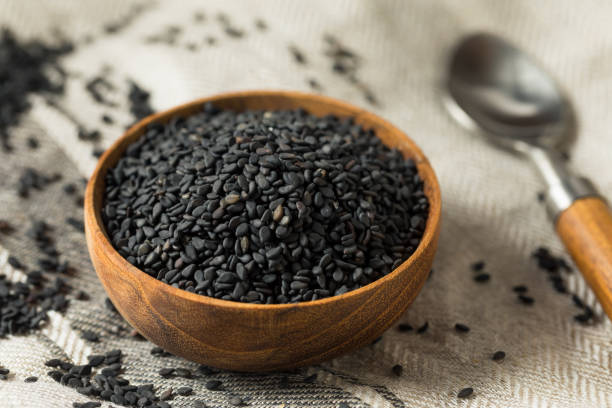The Ultimate Guide to Svastya Wild Forest Raw Honey
Be honey wise, not sugar foolish.
Svastya wild forest raw honey is 100 % RAW, NATURAL, UNPROCESSED, UNHEATED HONEY Sourced from the unreachable dense forest of western and eastern ghats.

Where is SOF wild forest raw honey harvested from?

Bees play an important role in their culture and customs. They take great care to ensure that no bees are damaged and that the flock returns to the same location to rebuild the hive. We contribute to bee conservation by teaching people about the value of native wild honeybees in the ecosystem.
Because all our collecting and processing processes are natural, our 100% pure wild forest raw unheated unprocessed honey is seasonally distinct. As a result, the colour, flavour, and texture fluctuate throughout the year based on the predominant flower variety of the season.
Why should you always choose Svastya Organic Farms Wild Forest honey?
The Regular honey undergoes Extraction, liquefaction, straing, filtration, moisture reduction, pasteurization, cooling, bottling.
Many of the phytonutrients present in raw honey as it occurs in the hive are typically removed during the processing process. Raw honey, for example, includes trace levels of the propolis resins. Propolis, sometimes known as "bee glue," is a complex combination of resins and other compounds used by honeybees to seal the hive and keep bacteria and other microorganisms out. Propolis is produced by honeybees by mixing plant resins with their own secretions. However, contaminants like as road tar have been discovered in propolis.
Because bees will spread this substance over the honeycomb and seal cracks with the anti-bacterial, anti-viral, and anti-fungal resins, beekeepers may occasionally employ special screens around the inside of the hive boxes to catch propolis. However, the resins contained in propolis only make up a minor portion of the phytonutrients found in propolis and honey. Other phytonutrients contained in both honey and propolis have been demonstrated to have anti-cancer and anti-tumor activities. Caffeic acid methyl caffeate, phenylethyl caffeate, and phenylethyl dimethylcaffeate are examples of these compounds. These compounds have been shown to prevent colon cancer in mice by inhibiting the activity of two enzymes, phosphatidylinositol-specific phospholipase C and lipoxygenase. The advantages of these phytonutrients are greatly reduced when raw honey is substantially treated and cooked.

What are the benefits of using Svastya organic farms wild forest raw honey?
Svastya organic farms wild forest raw Honey is a delicious, liquid produced by bees in and around our farm in the western and eastern ghats. Honeybees store their honey in hexagonal cups known as honeycombs. SOF wild forest Raw honey is extracted directly from the honeycomb.
Hive honey contains bee pollen and beeswax. Raw honey is generally filtered to remove these by regular honey manufacturers.
Regular honey, as opposed to raw honey, is pasteurised. This indicates that it has been heated to destroy yeast cells that can influence its taste, extend its shelf life, and make it appear clearer and more appealing. Pasteurization, on the other hand, may reduce the quantity of nutrients in honey.
Some historical evidence estimates that humans have used honey for over 8,000 years. During ancient times, people would have used raw honey, but today, most people use pasteurized honey.
Honey naturally offe the following healthful properties:
-
antibacterial action
-
wound-healing effects
-
dietary antioxidants
-
anti-inflammatory effects
A study on honey and a Source on bee pollen report that bee propolis and bee pollen can offer anti-inflammatory, antioxidant, antibacterial, and anticancer properties.
The following sections explore seven evidence-based health benefits of raw honey.
1. Antioxidant effects
Natural honey includes a variety of antioxidants, such as flavonoids, phytochemicals, and ascorbic acid.

By scavenging free radicals, antioxidants lessen the effects of oxidative stress on the organism. Oxidative stress has been connected by researchers to several chronic health issues, including several malignancies. People's chance of developing chronic diseases can be decreased by consuming a diet high in antioxidants.
According to some theories, pasteurization diminishes the amount of antioxidants in honey, thus it could not have the same health advantages as raw honey.
2. Nutrition
Depending in part on the kinds of flowers the bees collect nectar from, raw honey's precise nutritional value and chemical make-up change between nations and locations. Despite these aspects, honey still has beneficial elements such vitamins, amino acids, and antioxidants.

A tablespoon, or 21 grams (g), of raw honey has 64 calories and 16 grams (g) of sugar in it.
The following vitamins and minerals are found in natural honey in very modest amounts:
-
Niacin
-
Riboflavin
-
Pantothenic Acid
-
Calcium
-
Magnesium
-
Manganese
-
Potassium
-
Phosphorous
-
Zinc
According to some study, wild forest raw rock bee honey may help lower cholesterol levels while others may have a preventive impact against diabetes.
Consuming honey in moderation can help people with diabetes or on sugar-restricted diets avoid having their blood sugar levels significantly alter. The glycemic index (GI) of pure honey is 58, which indicates that it has a moderate impact on blood sugar levels.
3. Antibacterial action

Honey can help clean wounds and prevent infection.
Honey is a natural antibacterial and antimicrobial agent. It can destroy hazardous germs and fungus since it includes glucose oxidase and hydrogen peroxide and has a low pH level. It also prevents yeast or bacteria from growing due to its distinct chemical makeup.

Stingless bee honey, a form of raw honey, has been demonstrated to be able to destroy common pathogens such as:
-
Escherichia coli, or E. coli, a bacteria that causes food poisoning and wound infections. As a result of its antibacterial effect, individuals can use it to wash wounds.
-
Staphylococcus aureus, often known as S. aureus, a bacteria that causes infections of the skin.
-
Helicobacter pylori, also known as H. pylori, a bacterium that causes chronic gastritis and stomach ulcers.
4. Wound healing
Honey has been shown in several trials to be an effective dressing for wound healing.
A review supports the claim made by Trusted Source that honey's antibacterial, anti-inflammatory, and antioxidant qualities aid in wound healing. Additionally, some research points to honey's antiviral and antifungal capabilities.
Additionally, honey is acidic, which helps the wound release oxygen and speed up healing.
Minor burns and wounds should be treated immediately with raw honey before being covered with gauze or a bandage. As an alternative, patients can purchase Svastya wild forest Kasaru honey for wound treatment online.

5. Relieving coughs
According to some studies, honey may be just as effective as some over-the-counter (OTC) cough medications, if not more so. Honey may be a viable option for kids over the age of one year as many cough medications are not healthy for younger kids to consume.
Take a teaspoon of raw honey to calm a cough, and wait a few minutes before drinking or eating anything else to let the honey coat your throat.

6. Treating Diarrhea
Raw honey may have a soothing impact on the digestive system, easing diarrheal symptoms.
7. Protecting the brain
Raw honey has anti-inflammatory properties.
There is some evidence to back up the theory that honey has anti-inflammatory and antioxidant properties that are advantageous to the brain. In a research on animals, rats who drank honey were able to stave off brain damage brought on by lead exposure.
The hippocampus, a region of the brain associated with memory, is said to be prone to inflammation, and a review claimsTrusted Source that raw honey may include compounds that help with this fight.
According to certain studies, honey may have beneficial anti-inflammatory and antioxidant qualities for the brain. According to a study on animals, honey consumption in rats exhibited a protective effect against the brain damage brought on by lead exposure.Additionally, a review claimsTrusted Source that raw honey may include components that aid the hippocampus, a region of the brain associated with memory, battle inflammation.
Who should consume honey?
Raw honey is typically safe to use, provided that the user is not sensitive to bee pollen. According to the Centers for Disease Control and Protection (CDC), baby botulism is a concern when honey is given to children under the age of one. Honey is safe for consumption starting at age 1.

Choosing the right kind of honey
The label for Wild Forest raw honey will say "Wild Forest raw honey." The manufacturer has likely pasteurized the food if the label does not say "raw" or if it does not come straight from a farmer or beekeeper who can vouch for its authenticity.
The label may also describe the type of flowers that the bees pollinated to make that honey. The kind of flower determines the taste, color, and antioxidant and vitamin content of the honey.
Many types of pasteurized honey have labels that read “pure honey.” Others may say “clover honey” or may state that they come from a local area. Even products labeled as “organic honey” may not be raw, as some manufacturers do pasteurize organic honey. Some processed honey products contain high fructose corn syrup or other additives.
Wild forest Raw honey has nutrients that regular honey doesn't. This implies that the health advantages of raw honey are greater or more numerous.
Raw wild forest honey also contains bee pollen and propolis, which have antibacterial and antioxidant properties.The evidence supporting the medicinal effects of raw honey is promising. According to studies on its nutritional value and therapeutic benefits.




